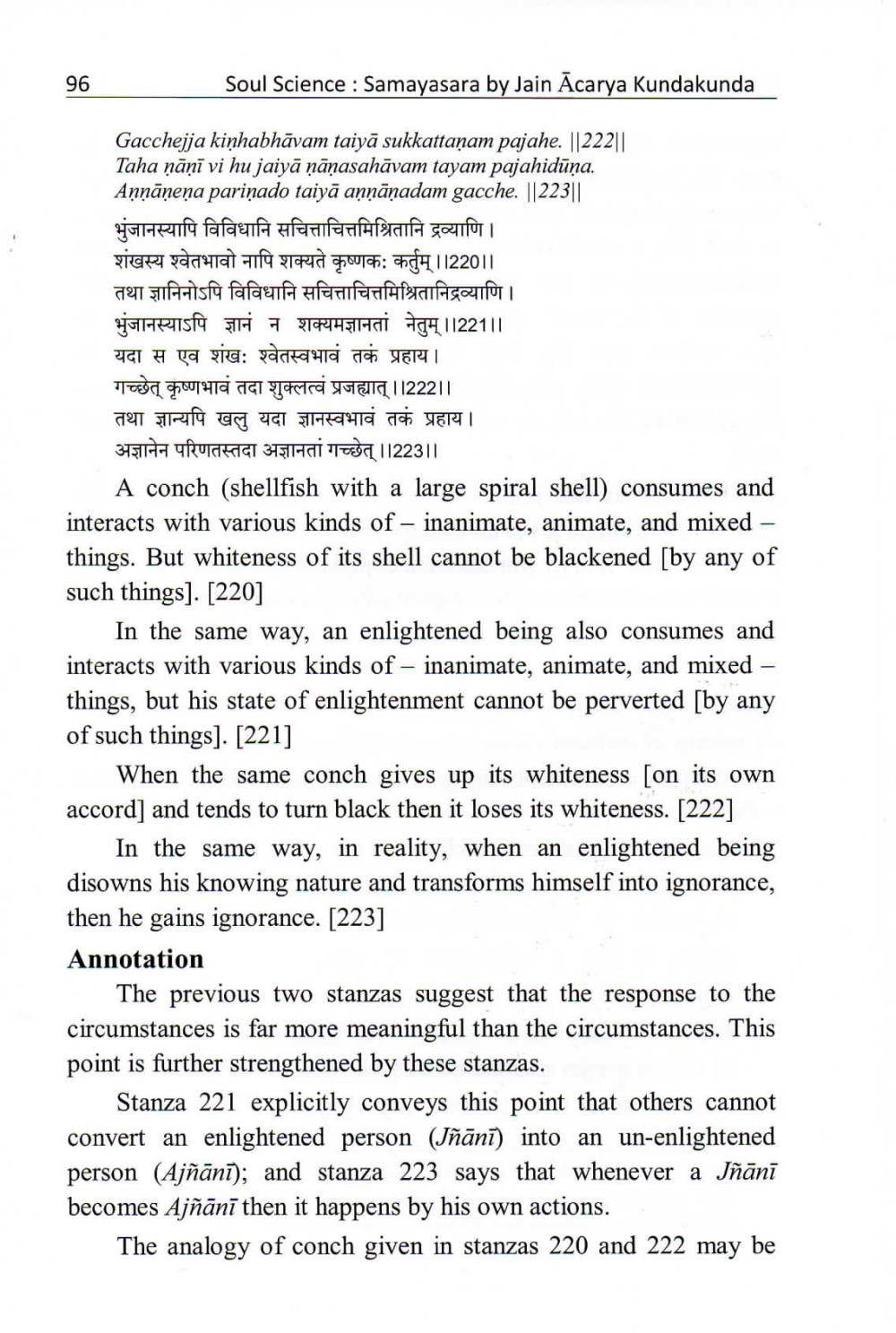________________
96
Soul Science : Samayasara by Jain Acarya Kundakunda
Gacchejja kinhabhāvam taiyā sukkattaņam pajahe. ||222|| Taha ņāņī vi hu jaiyā ņānasahāvam tayam pajahidūņa. Annānena parinado taiyā annānadam gacche. ||223||| भुंजानस्यापि विविधानि सचित्ताचित्तमिश्रितानि द्रव्याणि । Pige paahta Hifa ya 2,0014: at 1122011 तथा ज्ञानिनोऽपि विविधानि सचित्ताचित्तमिश्रितानिद्रव्याणि । भुंजानस्याऽपि ज्ञानं न शक्यमज्ञानतां नेतुम् ।।221।। यदा स एव शंख: श्वेतस्वभावं तकं प्रहाय । "TEROCE 2014ra a card SE 1122211 तथा ज्ञान्यपि खलु यदा ज्ञानस्वभावं तकं प्रहाय । 31511-4- Truderiai 3451461 TTEITE 11223|||
A conch (shellfish with a large spiral shell) consumes and interacts with various kinds of - inanimate, animate, and mixed - things. But whiteness of its shell cannot be blackened [by any of such things]. [220]
In the same way, an enlightened being also consumes and interacts with various kinds of - inanimate, animate, and mixed – things, but his state of enlightenment cannot be perverted [by any of such things]. [221]
When the same conch gives up its whiteness [on its own accord] and tends to turn black then it loses its whiteness. [222]
In the same way, in reality, when an enlightened being disowns his knowing nature and transforms himself into ignorance, then he gains ignorance. [223] Annotation
The previous two stanzas suggest that the response to the circumstances is far more meaningful than the circumstances. This point is further strengthened by these stanzas.
Stanza 221 explicitly conveys this point that others cannot convert an enlightened person (Jñānī) into an un-enlightened person (Ajñānī); and stanza 223 says that whenever a Jñānī becomes Ajñānī then it happens by his own actions.
The analogy of conch given in stanzas 220 and 222 may be




